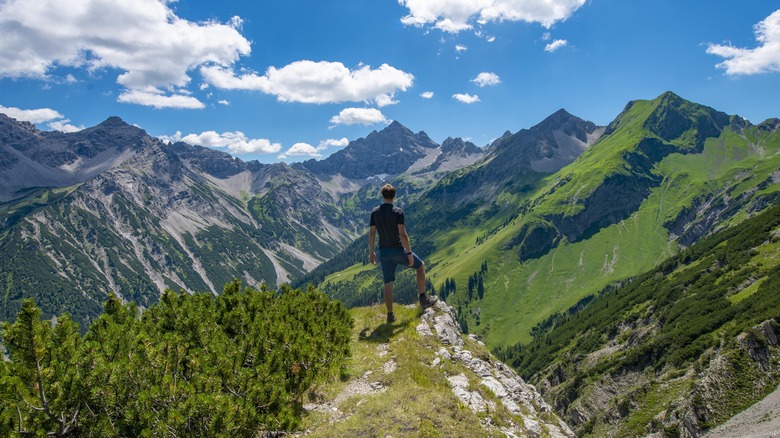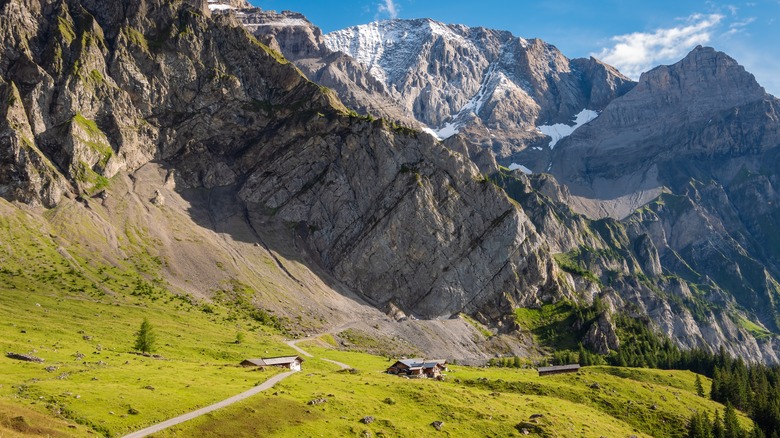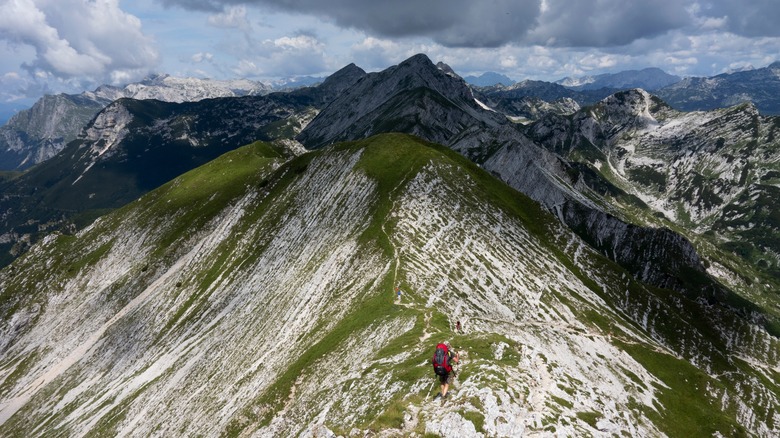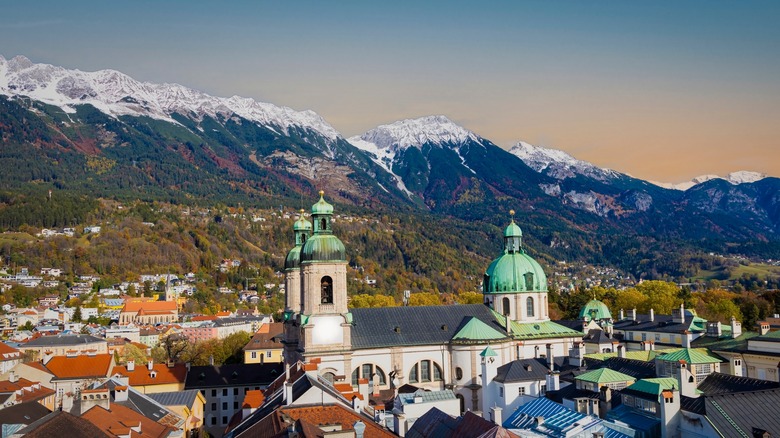One Of The World's Longest Trails Is A Hike Through The European Alps With Unmatched Beauty
When we think of the Alps, we usually think of Switzerland. Not just Switzerland, but the highest mountains of this Central European nation. And not just mountains, but jagged peaks covered in snow and dotted with chalets. Indeed, if we haven't spent any time there, many of us may just picture a single famous mountain, like the Matterhorn, and maybe some guys in lederhosen playing the accordion. We forget — or maybe never knew — that this mountain range spreads over eight countries, including France, Germany, Slovenia, and Liechtenstein. The Alps are considered the largest natural space in Europe, and they integrate a patchwork of cultures and languages, plus a landscape nearly as diverse as their inhabitants.
The Via Alpina hiking trail is a 1,200-mile, eight-nation tribute to this shared heritage. Crossing public and private land, the network of paths snakes its way across the Alps, connecting myriad parks and towns along the way. For long-distance hikers, this is one of the most seductive challenges in the world, a trail system both rugged and dependable. Even if you only take on a tiny segment of this route, the Via Alpina is proving to be one of the best outdoor activities in Europe.
Primeval mountains, civilized itinerary
The Via Alpina cuts through remote country, and travelers may feel like they have entire valleys to themselves. But part of the appeal of the Via Alpina is its thoughtful organization: The route is divided into 116 stages, with consistent access to food, water, and lodging along the way. Every mile of the Via Alpina has been carefully mapped, so conscientious hikers shouldn't get stranded. You must still come prepared, especially if you're hiking alone, but one of the goals of the Via Alpine is to build community among hikers and Alpine residents, so you can expect to meet a lot of folks along the way.
You'll also get a workout. The handful of athletes who complete the entire circuit will climb more than 80,000 feet in elevation. While many would say this is equivalent to ascending from sea level to the top of Mount Everest nearly three times, the highest point on the Via Alpina is 9,900 feet, which most people should be able to handle without suffering severe altitude sickness, especially if you're acclimatizing along the way. If you're concerned about your wellbeing in thinner air, here are six essential safety tips.
How to hike 1,200 miles of mountains: an overview
There are infinite ways to experience this trail, in whole or in part, but the official Stage 1 begins in Muggia, a small town in the northeast corner of Italy, just outside of Trieste. Thru-hikers then follow the route northeast through Slovenia, west along the Italian frontier, and across western Austria to Liechtenstein. From there, you'll take a winding route through the Swiss Alps, veer south along the French border, and finally arrive in the tiny nation of Monaco, or Stage 116. The Via Alpina offers a couple of optional detours, which cover similar terrain in different ways. One of these detours dips into southern Germany.
Given the epic length and dynamic topography, you might assume that only seasoned mountaineers could embark on the Via Alpina. Actually, it's designed to be accessible to almost any fit hiker: The path doesn't cross any of Switzerland's famous glaciers. No helmets, ice axes, or crampons should ever be needed. You won't have to hook into a single belay line or outwit wild bears. Your biggest concerns are getting lost, especially on foggy days, or underestimating the weather.
Camping, language barriers, and other considerations
The full route should not be taken lightly, of course. Nearly all thru-hikers should anticipate months of planning and physical training. The varying climates — from dry Mediterranean coasts to mountaintop tundra — will require a wide range of outfits and gear, and seasons will change as time goes by. Avid campers should be aware that huts are the most popular accommodation in the European Alps, and wild camping is only possible in certain areas and strictly regulated. Huts are a beloved part of Alpine culture, and they're almost always cozier than a tent, especially after a tiring day on the path, but they'll add significant expense to your budget.
For culture vultures, the Via Alpina is a buffet of languages and customs, and you'll hike right into many sizable towns and cities. Some of them are famous, such as the picturesque Tyrollean city of Innsbruck; Others, like the Slovakian town of Idrija, may be completely new to you. You will hear a wide range of languages, from native Italian, French, German, and Slovenian to myriad other tongues spoken by tourists; translation apps are always handy, but rest assured that English is widely spoken and understood. While you're preparing, here are the best tips for hiking in Europe, according to Rick Steves.



